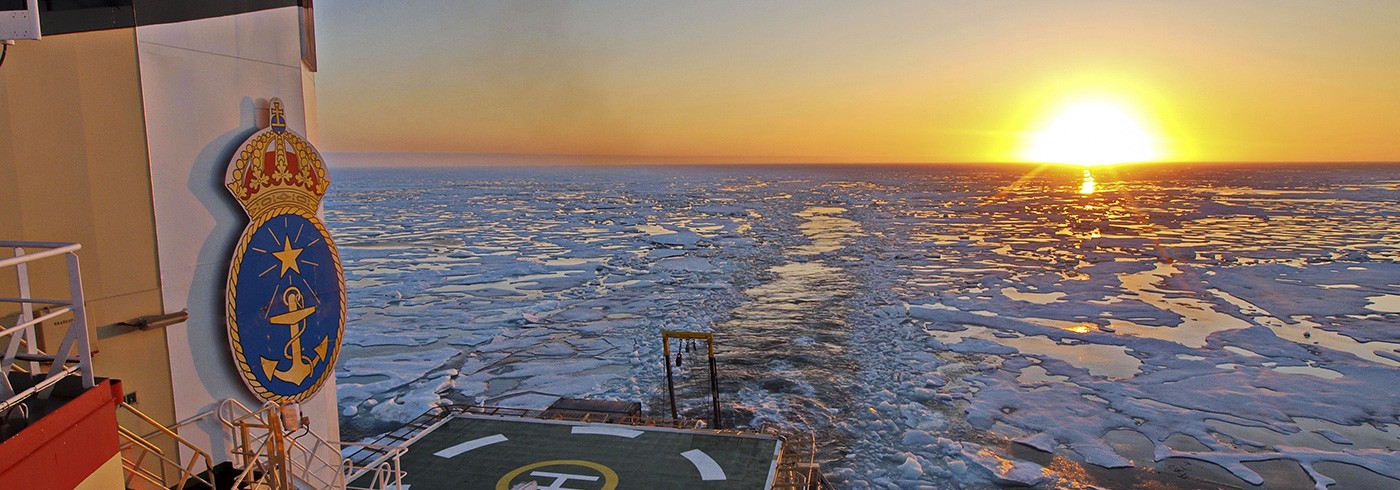Permafrost, hydrates and carbon cycling in the East Siberian Arctic Ocean
5 July 2014 - 20 August 2014
Crew and scientists on icebreaker Oden in icy and sunny waters north of Bennett Island on 28 July 2014. Photo: Jorien Vonk
Thawing coastal and subsea permafrost and collapsing shallow methane hydrates could potentially add carbon dioxide and methane to the atmosphere this century, yet there is presently poor understanding of these systems and processes. We need to increase our understanding of the sizes of vulnerable pools of old organic matter and methane, of release processes and of the fate processes of released carbon components in order to better predict the trajectory of future remobilization and potential releases to the ocean and the atmosphere.
The aims of SWERUS-C3 were to investigate the present and historical connections between climate, cryosphere and carbon (C3) in the East Siberian Arctic Ocean (figure 1). Several sub-projects have focused on the sources, mechanisms and magnitudes of the methane released from the subsea permafrost, shelf hydrates and slope hydrates.
The investigations were focused to the inaccessible East Siberian Arctic Shelf and upper slope systems (figure 2) as this is the location of (1) majority of coastal ice complex deposit, known as Yedoma, draping thousands of km of coastline; (2) >80% of the World’s subsea permafrost; (3) 80% of the World ocean shallow hydrates, and (4) an underlying “petroleum megapool” that may contribute to methane releases through a failing subsea permafrost lid.

Cruise track and station locations of the Leg 1 part of the SWERUS-C3. In addition to the focus area shown in this map, many continuous measurements and sample collections were performed in transit to the focus area from Tromsö and from the focus area in transit to Barrow.
A wide breadth of state-of-the-art techniques were employed to continuously monitor and observe the composition of the sediments, the seawater and the overlying atmosphere. Additionally, 57 oceanographic stations were taken during Leg 1 of SWERUS-C3 (figure 2).
The expedition was successfully executed and all desired study areas and system components were observed and sampled. Analyses of these observations and collected samples will likely provide new fundamental insights of the climate-cryosphere-carbon system interactions in an absolute key region of the Earth System – the East Siberian Arctic Ocean.

Schematics of key components of the Arctic climate-cryosphere-carbon (C3) system that are addressed by the SWERUS-C3 programme. The insets a-f illustrates the Arctic C3-system in focus for the SWERUS-C3 two-leg expedition. a,b) Sonar images of gas plumes in the water column caused by sea floor venting of methane (a: slope west of Svalbard (Westbrook et al., 2009); b: East Siberian Arctic Ocean (Shakhova et al., 2010). c) Coastal erosion of organic-rich Yedoma permafrost, Muostoh Island, south-east Laptev Sea. d) Multibeam image showing pockmarks from gas venting off the East Siberian shelf. e) Distribution of Yedoma permafrost in north-east Siberia. f) Multiple transport, conversion, and venting processes of released permafrost organic matter, CH4 and CO2.

